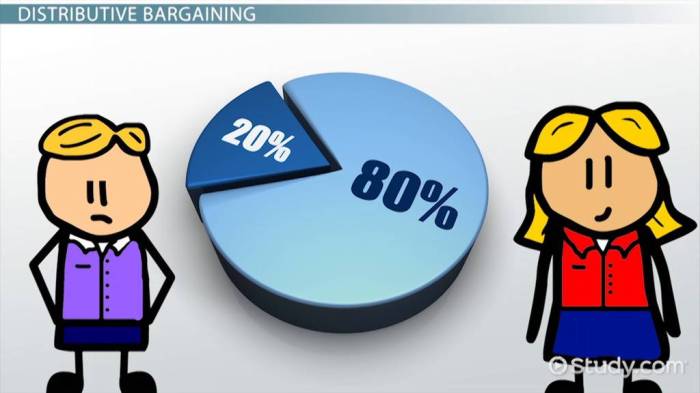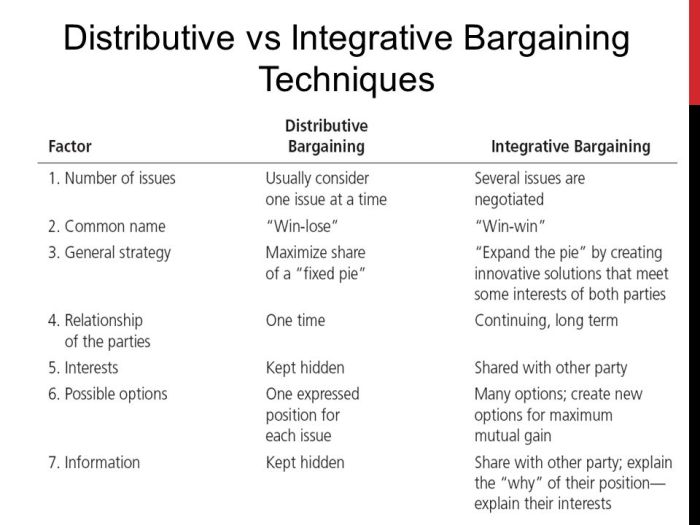Distributive bargaining is characterized by all of the following except: – Distributive bargaining, characterized by its win-lose approach, stands apart from other negotiation styles due to its unique features and applications. This article explores the defining characteristics of distributive bargaining, highlighting what it is not characterized by, and examining its distinctive features that differentiate it from other negotiation approaches.
Distributive bargaining is characterized by a fixed pie mentality, where gains for one party come at the expense of the other. Unlike integrative bargaining, which seeks to expand the pie through collaboration and mutual gains, distributive bargaining focuses on dividing a predetermined resource.
Distributive Bargaining: Distributive Bargaining Is Characterized By All Of The Following Except:

Distributive bargaining, a competitive negotiation style, involves a fixed pie where each party aims to maximize their share at the expense of others. It is characterized by:
Key Characteristics
- Zero-sum game: The gains of one party come at the expense of the other.
- Fixed pie: The total value of the negotiation is predetermined and cannot be expanded.
- Competitive focus: Each party prioritizes their own interests over collaboration.
- Limited information sharing: Parties withhold information to gain an advantage.
- Positions-based negotiation: Parties focus on their initial positions rather than exploring underlying interests.
Exclusions, Distributive bargaining is characterized by all of the following except:
Distributive bargaining is NOT characterized by:
- Collaboration: Parties do not work together to create mutually beneficial solutions.
- Mutual gains: Both parties do not seek to improve their outcomes simultaneously.
- Open communication: Parties do not share information freely to reach a consensus.
Distinctive Features
Distributive bargaining differs from integrative bargaining in the following ways:
- Focus:Distributive bargaining focuses on dividing a fixed pie, while integrative bargaining aims to expand the pie through collaboration.
- Communication:Distributive bargaining involves limited information sharing, while integrative bargaining encourages open communication.
- Nature:Distributive bargaining is competitive, while integrative bargaining is cooperative.
Applications
Distributive bargaining is commonly used in:
- Business negotiations: Dividing profits or resources between companies.
- Salary discussions: Determining compensation packages between employees and employers.
- Resource allocation: Distributing scarce resources among competing parties.
Strategies
For effective distributive bargaining:
- Prepare thoroughly:Research the other party, their interests, and potential concessions.
- Set realistic goals:Aim for a fair outcome that aligns with your interests.
- Manage concessions:Be prepared to make concessions while protecting your core interests.
- Understand interests:Identify your own interests and those of the other party to find areas for potential compromise.
FAQ Corner
What is the fundamental principle of distributive bargaining?
The fundamental principle of distributive bargaining is that gains for one party come at the expense of the other, resulting in a fixed pie mentality.
How does distributive bargaining differ from integrative bargaining?
Distributive bargaining focuses on dividing a predetermined resource, while integrative bargaining seeks to expand the pie through collaboration and mutual gains.

